Thuja western "Teddy": description, planting and care
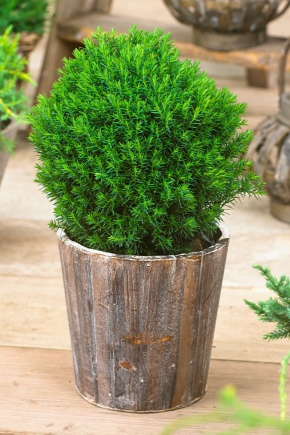
Conifers are of interest to designers and gardeners not only in light of their beneficial properties of air disinfection, but also as a decorative decoration of the territory. Among the many representatives of such cultures, it is worth highlighting the "Teddy", which attracts attention with its spherical shape and unpretentious care.
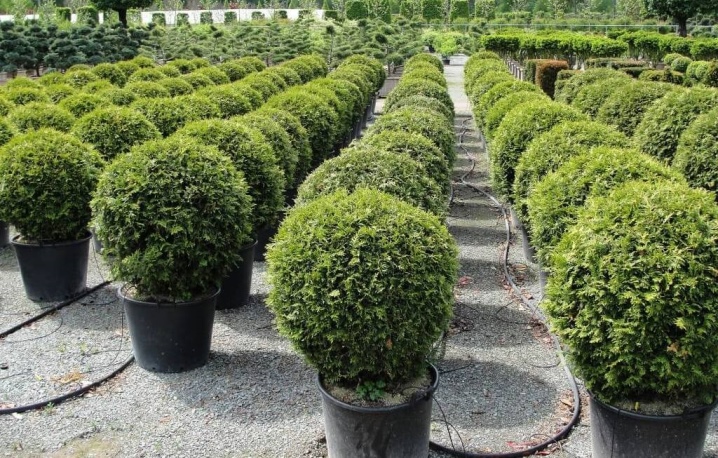
Description
The culture today has several common names, in addition to the most common, it is called "Teddy" juniper, as well as "life tree". Western thuja has a soft spherical crown that will not leave indifferent any gardener or decorator. The plant is not annual, so it will grow in one place in the open field for more than a hundred years. The culture is characterized by bactericidal properties, since in the process of growth, the "life tree" releases phytoncides that disinfect the air. North America is considered the birthplace of thuja, and literally "thuja" is translated as "incense". It is due to the emitted unique aroma that is formed during the combustion of such wood.
The culture grows slowly, during the season the dwarf tree adds only 2-3 centimeters in height. On average, the height of an adult plant varies within 1–1.5 m. Thuja belongs to the Cypress family; in the process of growth, it throws out a large number of shoots, which give it the shape of a ball. The foliage of the culture has the shape of needles, gradually it becomes like scales. The color of the crown will be green, but with a bluish tint; with the arrival of autumn and winter, the plant turns yellow or even bronze. The process of renewal of needles occurs in thuja every 2-3 years, it is associated with the fall of small branches and shoots. The crown and bark of the thuja are soft, but strong, in addition, the shrub stands out with a well-developed surface-type root system. Coniferous crops also form cones, inside which the seed is located, reliably protected by scales.

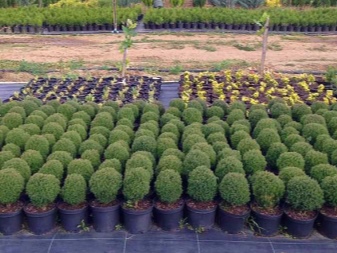
How to plant?
The dwarf shrub does not belong to demanding and capricious crops, so the gardener should independently choose the optimal time for planting it in open ground. Experts recommend planting thuja, starting from mid-spring until autumn, but on condition that a young seedling with closed roots is planted. Open-rooted trees are planted from May to September. There are the following recommendations regarding the planting of the "Teddy" thuja:
- the gardener should select only well-lit places for the rooting of the plant, but direct sunlight can burn the needles, so the priority will be the area where diffused sunlight will be present during the day; in the shade, the needles will grow very slowly, in addition, the crown will not be so lush;
- the place where the thuja will grow should not be in a draft, since the plant does not tolerate cold winds;
- as for the soil, the coniferous shrub should not be rooted in heavy clay soils; to dilute such soil, you can combine it with black soil, and also equip good drainage before planting the plant, in order to avoid stagnation of water at the roots, loose fertile soil types will be in priority;
- trees will grow well in areas with a slight slope or on a hill; it is not recommended to plant a crop in a lowland, so as not to provoke rotting of the root system during excessive rainfall.


The planting algorithm will be as follows:
- if the soil available on the ground is suitable for rooting, then there will be no need to carry out any additional measures; in some cases, you can prepare a special soil mixture for planting thuja, it can consist of leafy earth, peat and sand;
- as an additional measure, you can use mineral additives for introduction into the soil;
- planting a plant with a closed root system is carried out in a pre-moistened soil; in other cases, watering is carried out after rooting;
- the size of the groove will depend on the size of the seedling and roots; the holes for the thuja should be twice as large as the plant;
- drainage is laid on the bottom before planting - it can be broken brick, gravel, expanded clay;
- the next layer will be the earth, which needs to be filled with 2/3 of the hole, after which, if desired, organic matter or mineral fertilizers can be introduced;
- the soil is slightly moistened, then a seedling is placed in the center, leaving the root collar above ground level, then the earth is poured to the end, tamped well, watered with water;
- it is best to mulch the near-trunk circle; for these purposes, you can use dry grass or sawdust;
- when planting several shrubs, the distance between them should be at least half a meter.
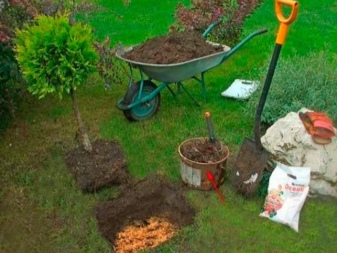

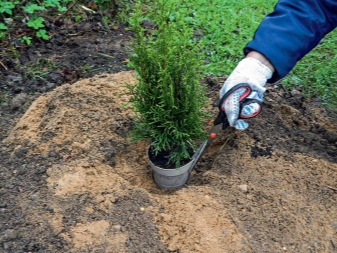

How to care?
It is worth noting several agrotechnical measures when growing such an ornamental shrub.
Watering
In the first few weeks, the crop will require a regular introduction of moisture for better rooting and adaptation. However, watering should not be overused; it is necessary to focus on the condition of the soil. When the dwarf shrub takes root, watering can be done once a week. One adult crop will require 2 buckets of water. In the heat, the volumes can be increased slightly by injecting moisture twice a week.
It will be possible to determine that the plant needs additional liquid due to the state of the crown - due to a lack of water, the thuja will begin to fade and turn yellow. Watering with cold liquid should be avoided. To increase the aromatic properties of the needles, you can use the sprinkling method. The introduction of moisture is recommended in the morning or evening hours after sunset.
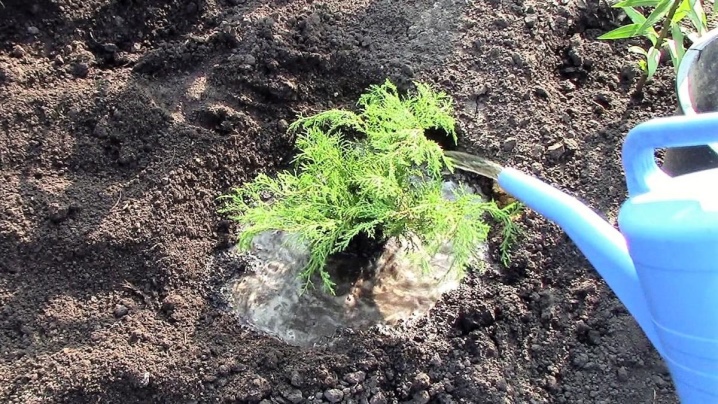
Mulching the trunk circle
The next important event related to care will be mulching the soil around the thuja. Using a layer of mulch, the gardener will be able to avoid drying out the soil, as well as the growth of weeds, which will absorb all important trace elements from the ground. Straw or bark will help preserve and maintain a kind of microclimate inside, which will help retain moisture.
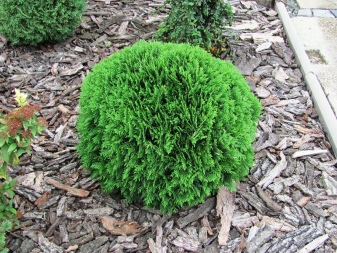
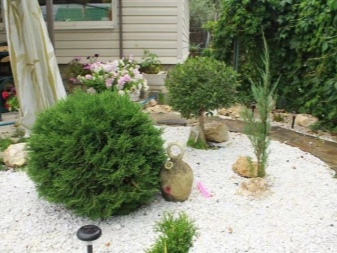
Loosening
An alternative to the previous method of caring for thuja will be the obligatory loosening of the trunk circle, which is usually carried out after each introduction of moisture. Deep penetration of the tool into the ground is not required, since the root system of a coniferous culture is superficial.
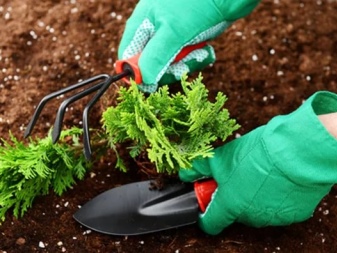

Fertilizer introduction
In order for a dwarf shrub to grow and develop normally, one feeding in 12 months will be enough for it. Usually such events are held at the beginning of spring. The priority will be complex fertilizers and mineral compositions recommended for conifers. You can also periodically add peat or compost of plant origin to the soil.
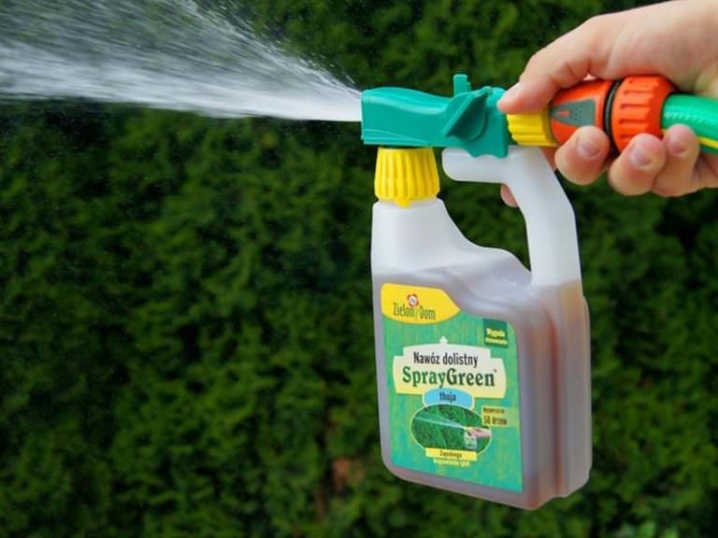
Pruning
Formative pruning is unnecessary for the crop, but the grower will need to sanitize pruning in April and May. It involves the removal of dry branches.
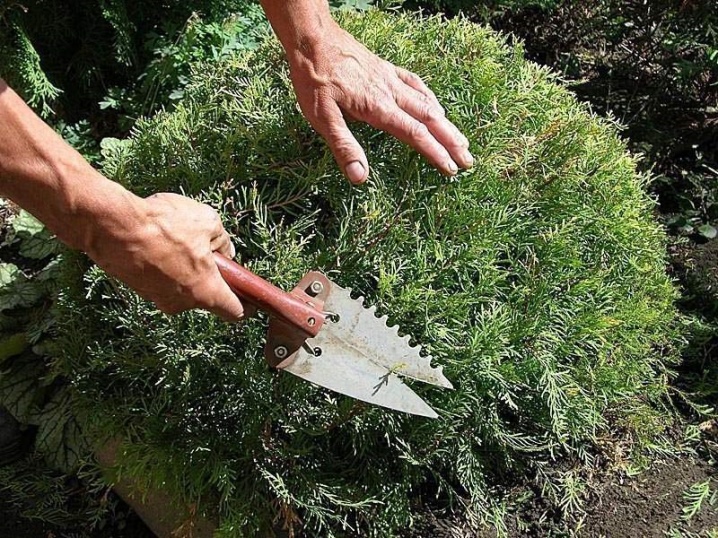
Preparation for wintering
Mature, mature plants are distinguished by good frost resistance, so they can winter outdoors even in the harsh Russian winters.But until the needles reach the age of three, it is recommended to cover it using agrofibre. After winter, with the arrival of the thaw, it can be removed.
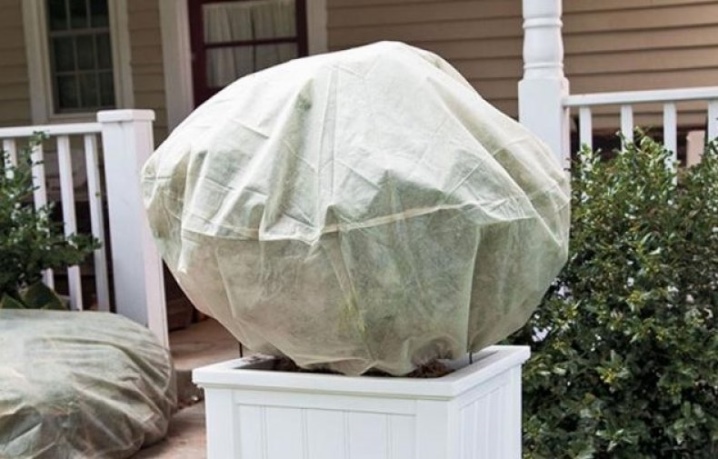
Reproduction
It is worth considering the most common options that are used for breeding thuja "Teddy".
Planting seeds
This option will require patience from the breeder, and the plant will also lose its varietal characteristics. Most gardeners prefer to get new crops from cuttings, so the young plant will retain all the features inherent in the mother shrub. Sowing seeds involves the initial collection of planting material from dried thuja cones. To germinate seeds, you will need a small wooden box, as well as a soil mixture of peat, sand and turf.
Thuja seeds are sown usually in the fall. After rooting, the soil is moistened, then covered with lutralis. As a rule, the first shoots should already appear in the container in the spring. During this period, you can remove the covering material, apply mineral fertilizing every two months. When the crops are large enough, they can be rooted in open ground.
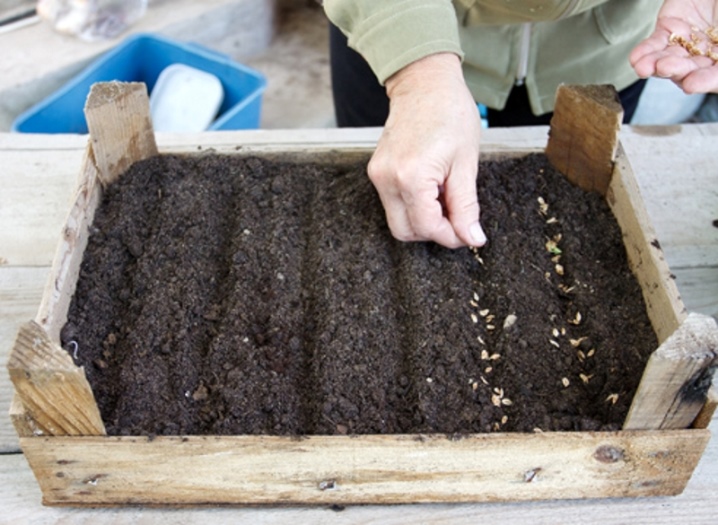
Cuttings
Cuttings for subsequent planting are best chosen from two-year-old shoots. The optimal length is 20-25 centimeters. You can also use shoots that will be about a year old, their length can be 10–20 centimeters. Planting material is usually carried out in June. First, crops are germinated in greenhouse conditions in a similar soil mixture as the seeds. Before planting, the cuttings are freed from the needles, the seedlings are added dropwise by 2-3 centimeters, the room temperature is maintained at a constant level of + 25 ° C and the humidity is not lower than 70%.
Important! Sometimes thuja propagation is practiced by the method of horizontal branches, by dividing the mother plant. However, these options are more suitable for experienced gardeners.
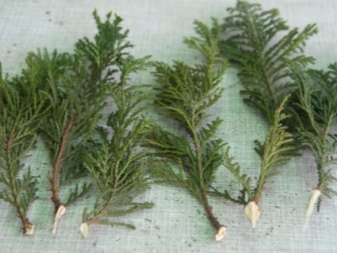
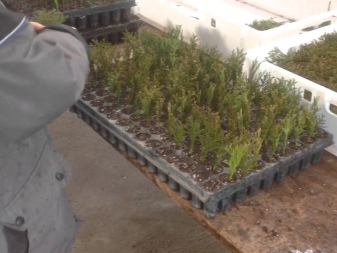
Diseases and pests
Tui quite rarely suffer from lesions by various ailments, but there are cases of the development of cytosporosis, fusarium, rust and thuja pseudopods. If any signs of the development of fungal infections are detected, it is necessary to promptly process the plant with copper-containing compounds. Topsin-M and Hom show good results. Bordeaux liquid and foundation is suitable as a preventive measure. Sometimes the plant attacks aphids.
To kill the insect, gardeners use insecticides to spray. Treatment must be carried out twice, with intervals between sprays of 5-10 days.
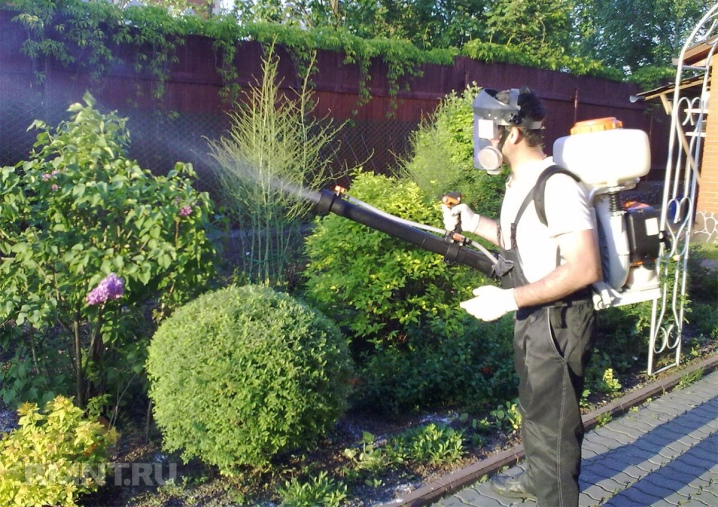
Use in landscape design
Thuja "Teddy" is an excellent option for the formation of green compositions in a garden or public area. The plant can be used in a composition or as an independent lawn decoration. Very often pine needles are present in the compositions of alpine slides.
In addition, the culture can be rooted in the open ground or in special decorative containers for green spaces, they can decorate balconies, open verandas. Tui are seated in parks and other recreation areas along gazebos, on alleys, in city squares.
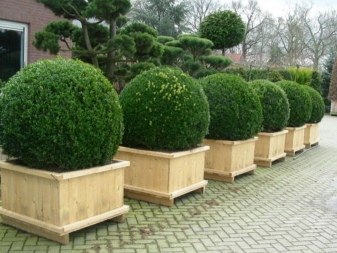

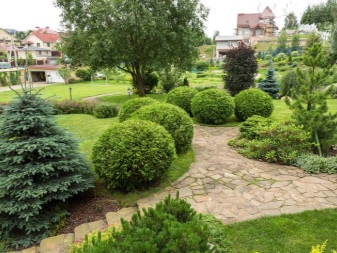
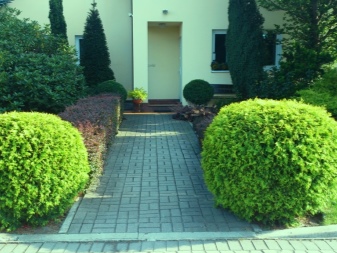
For planting and caring for thuja, see the next video.



































































The comment was sent successfully.